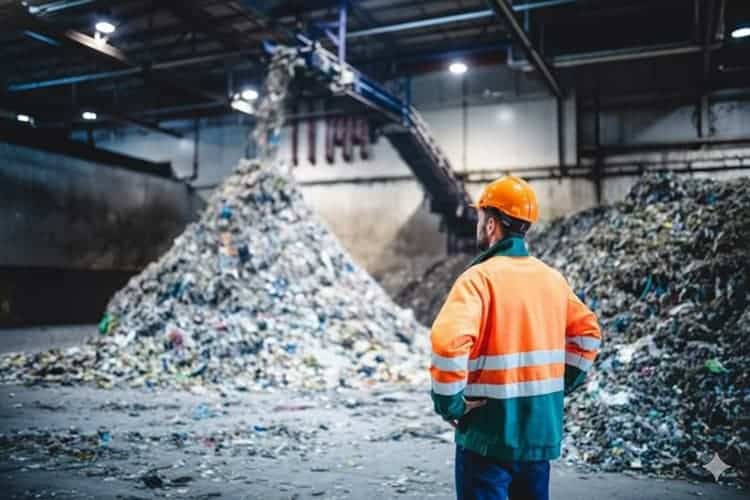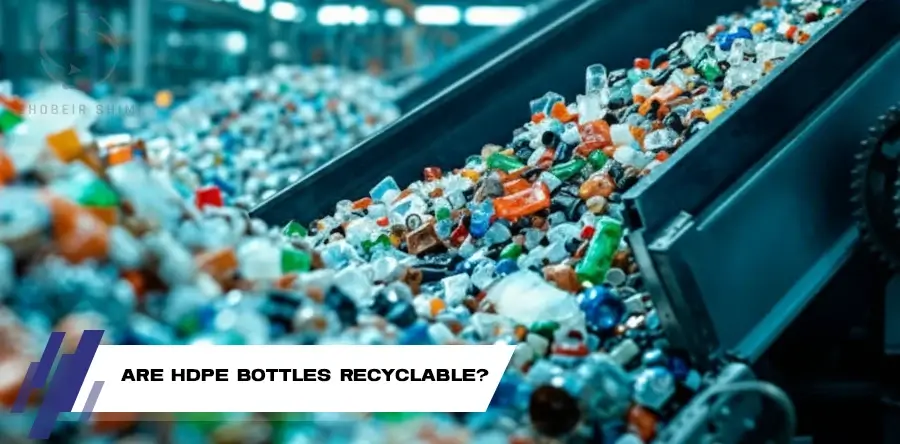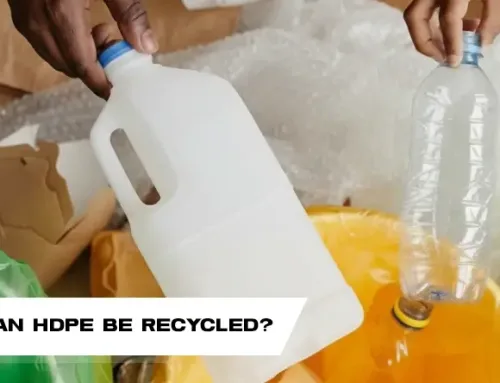High-Density Polyethylene (HDPE) stands as one of the most critical polymers in modern industrial and consumer sectors, prized for its strength, chemical resistance, and durability. From robust industrial containers to everyday household goods, its versatility makes it indispensable. However, the sheer volume of HDPE used, particularly in packaging, presents a significant environmental challenge. This guide is engineered for B2B stakeholders—manufacturers, waste management firms, and product designers—seeking to transform waste streams into tangible assets. We confirm that Recycling HDPE bottles is not merely an ecological aspiration but an economically vital component of a modern, resilient supply chain. Understanding the nuances of recycling HDPE specifically from bottles allows businesses to secure feedstock, meet regulatory demands, and demonstrate genuine commitment to circular economy principles.
Why HDPE Recycling is Vital for Modern Manufacturing and the Environment
The decision to prioritize the recovery of HDPE bottles recyclable material directly impacts operational costs and long-term environmental viability, positioning forward-thinking businesses ahead of regulatory curves and consumer expectations.
Environmental Stewardship and Reducing Plastic Pollution
The pervasive issue of plastic pollution demands immediate, scalable solutions. Diverting HDPE away from landfills significantly curtails the volume of persistent waste accumulating in ecosystems. Effective Recycling HDPE bottles directly contributes to cleaner waterways and reduced macro and microplastic contamination. Furthermore, the processing required for this specific recycled polymer generates demonstrably lower carbon emissions compared to the extraction and synthesis of new polymers, which is a major component of the production of new plastic. Adopting robust Recycling HDPE bottles programs aligns perfectly with eco-conscious practices that resonate strongly in today’s marketplace, offering transparency regarding waste management. The goal is clear: reduce plastic waste through focused efforts on post-consumer materials.
Economic and Energy Efficiency Benefits
Economically, integrating recovered materials provides a buffer against volatile global commodity markets. The cost associated with processing reclaimed HDPE plastic scrap from bottles often undercuts the procurement of virgin resins. This material substitution leads to substantial energy conservation across the manufacturing lifecycle. Recycling HDPE from bottles is proven to be an energy-efficient alternative, requiring substantially less energy input than primary production. This efficiency translates directly into reduced overheads, fostering a more sustainable production process for all downstream users of HDPE products. For those utilizing HDPE 2 plastic reuse strategies, the energy savings are tangible assets.
The Comprehensive HDPE Recycling Process: From Collection to Remolding
Achieving high-quality recycled resin from used containers requires meticulous attention to detail at every stage of the material recovery process, moving beyond simple aggregation to sophisticated material science tailored for HDPE bottles be recycled.

Detailed Steps in Recycling HDPE Scrap (Addressing the How-To Query)
The journey begins with meticulous collection, often sourced from Material Recovery Facilities (MRFs), commercial waste streams, and post-consumer sources specifically involving discarded containers. The critical first step involves aggressive sorting to isolate the specific HDPE grade (e.g., natural vs. Colored), separating bottles from non-target items. Following sorting, the material undergoes intensive washing and separation to remove contaminants such as paper labels, glues, and residual contents specific to liquid containers. This often involves flotation tanks where density differences help separate contaminants from the target polymer. Next, the clean, dry material is passed through industrial shredders or granulators, reducing it to manageable flakes. These flakes are then typically melted, filtered (to remove remaining minute impurities), and finally pelletized into uniform material suitable for reprocessing. Successful Recycling HDPE bottles hinges on the efficiency of this cleaning and re-pelletizing phase, ensuring the material is ready to become high-grade HDPE Regrind.
Quality Control: Ensuring High-Grade Recycled Resins
For recycled HDPE to be viable in demanding applications, quality control is non-negotiable. Key metrics include Melt Flow Index (MFI) testing, which dictates how easily the polymer flows during molding operations, ensuring consistency with processing requirements for products like new containers. Spectroscopic analysis confirms the polymer structure and purity, while mechanical testing (like impact resistance) verifies that the material retains sufficient structural integrity. Regarding longevity, the practical answer to “How many times can HDPE be recycled?” is several times, provided robust quality checks are maintained; it is a highly durable polymer. Strict quality assurance protocols are essential for the sustained viability of Recycling HDPE bottles programs and materials like plastic bottle to HDPE recyclable streams.
Driving the Circular Economy: Applications for Recycled HDPE (B2B/Commercial Focus)
The value proposition of recycled HDPE is maximized when its output streams are strategically matched with industrial demand, driving true resource efficiency. Beyond cost savings, this alignment fosters innovation, inspires collaboration among manufacturers and recyclers, and helps enterprises meet sustainability targets without compromising product integrity. It is not only a technical success but also a mindset shift—turning waste into measurable opportunity through commitment, creativity, and responsible design thinking.
Generating Value from Your HDPE Scrap
The output of the recycling chain transforms what was once considered waste into marketable raw material. High-quality recycled HDPE pellets are highly sought after for manufacturing durable goods such as plastic lumber, outdoor furniture, durable piping, and crates. Scrap generated internally, such as trimmings from extrusion blow molding machine operations or sprues from injection moulding, can be reintroduced directly or sold to specialized recyclers, effectively turning a disposal cost into revenue. The continuous collection and processing of Recycling HDPE bottles ensure a consistent domestic supply chain. The Benefits of recycling HDPE bottles are clearest here: turning a liability into an asset stream.
Integrating Recycled HDPE in Modern Manufacturing
Modern manufacturers, especially those employing machine blow molding technology for containers, are increasingly required or incentivized to incorporate Post-Consumer Recycled Plastic (PCR). Strategic partnerships with recycling processors allow companies to design a closed-loop plastic recycling solution, where their own manufactured waste stream is cleaned, reprocessed, and returned directly into their production line. This integration is not just symbolic; it provides verifiable metrics for corporate sustainability reporting and ensures material security, especially as regulations tighten regarding minimum recycled content in packaging. The future relies heavily on optimizing the pathways for Recycling HDPE bottles into new, high-specification products, ensuring the plastic bottle to HDPE recyclable pathway remains open.
Strategic Challenges and Future Outlook
While the technology and demand exist, scaling HDPE recycling faces specific industrial hurdles that require focused investment and collaboration, which are key to improving the recycling process for HDPE bottles.
Overcoming Hurdles in Commercial HDPE Recycling
The primary technical challenge involves contamination, particularly challenging in mixed recycling HDPE bottles streams contaminated with inks, multi-layer labels, and non-HDPE polymers (like PET). Innovations in Near-Infrared (NIR) sorting technology and advanced washing chemistries are crucial for achieving the necessary purity levels demanded by high-end converters. Furthermore, developing advanced mechanical or chemical recycling techniques that can efficiently decontaminate highly printed materials remains a key area for R&D investment to address the challenges in HDPE bottle recycling.
The Future of Sustainable PACKAGING
The industrial demand for certified, high-quality recycled resins will only accelerate, driven by legislative mandates and consumer preference for versatile plastic goods that minimize environmental harm. Companies that invest now in securing reliable sources of high-grade recycled HDPE will gain a significant competitive advantage. This future hinges on expanding the infrastructure dedicated to continuous Recycling HDPE bottles and other post-consumer streams, solidifying the transition away from linear models. Every effort in Recycling HDPE bottles contributes to a more secure resource future.
Conclusion
The synergy between environmental responsibility and operational efficiency is most clearly demonstrated in the robust field of HDPE reclamation. For B2B entities, proactive engagement in Recycling HDPE bottles secures feedstock, reduces reliance on fluctuating virgin resins, and builds a resilient, future-proof manufacturing base. We strongly urge businesses to analyze their specific waste streams, forge strategic partnerships with recycling innovators, and leverage existing technologies to maximize the lifecycle of this versatile plastic. By prioritizing comprehensive programs focused on Recycling HDPE bottles, companies embrace the circular economy, ensuring both resource security and enduring environmental credibility. Implementing comprehensive Recycling HDPE bottles is the most direct route to sustainable industrial growth.







Leave A Comment